
Herd Management
Animals are treated in a special needs barn – a special area where cows can be separated and more closely monitored during recovery from sickness or injury. If needed, they are individually milked, and disposal of that milk may occur depending on their condition or treatment.
Conditions
The special needs area typically consists of large pens that contain a bedded pack – a soft, thick bedding material made from organic materials such as straw. Manure is deposited on the bedded pack, and gets managed differently from the rest of the manure on the farm.
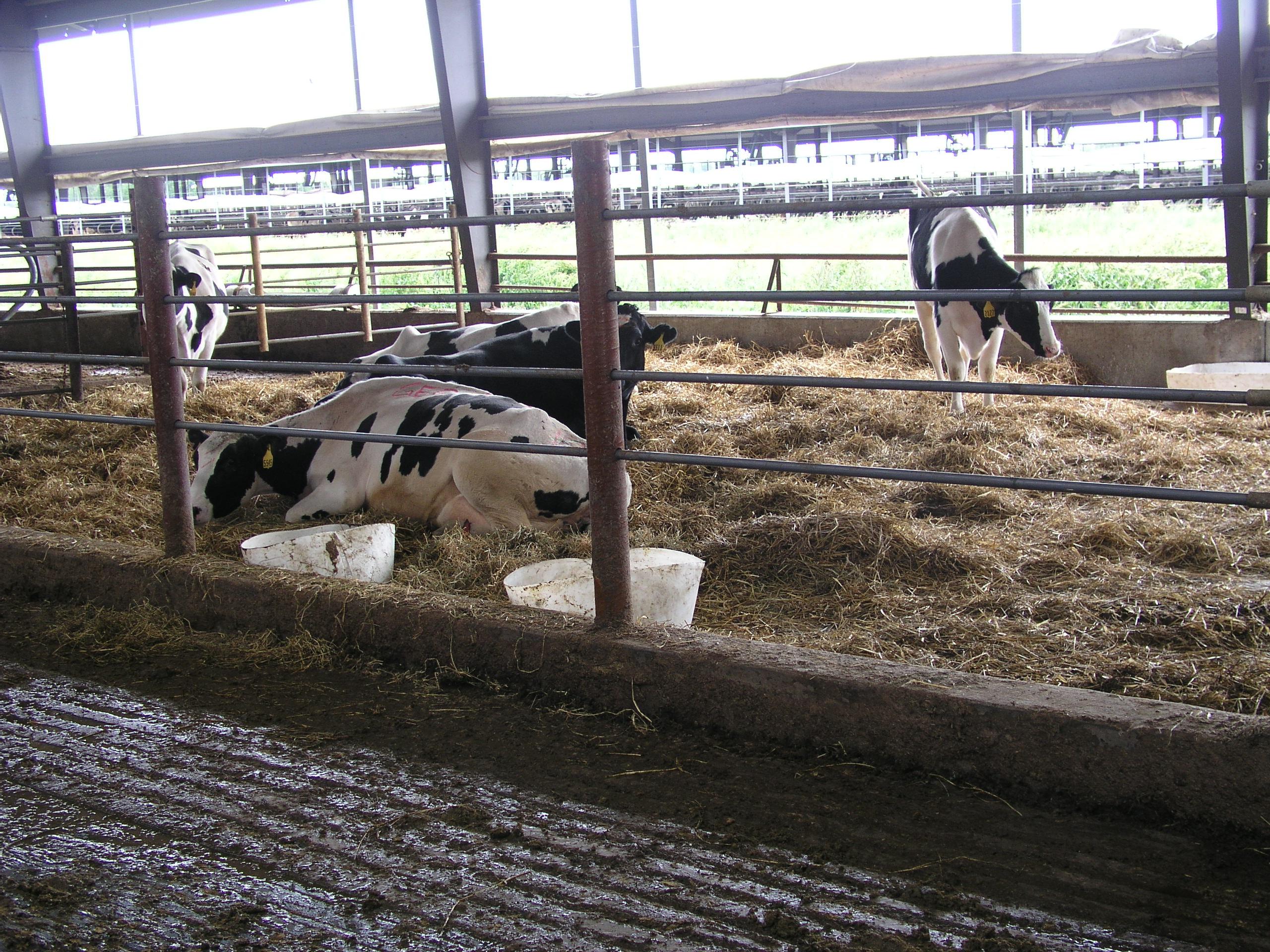
Dairy housing facilities are specially designed to provide a safe, high quality controlled environment for the cows to inhabit. They are carefully sited and oriented to take advantage of prevailing winds for natural ventilation, as well as reducing the impact of solar radiation on the indoor environment. Biosecurity, temperature control, feed ration control, easy access to fresh water, controlled lighting, shade from hot sun, and protection from weather extremes. Also provide protection for the outside environment by concentrating cow traffic into one area with concrete floors to prevent erosion and to contain manure on the farm.
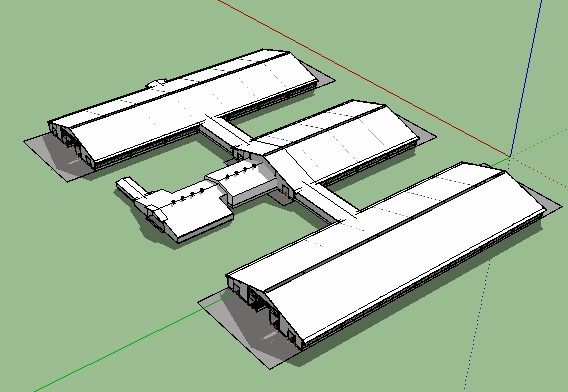
Workflow
Freestall barns have soft, clean bedding for cows to rest and alleys with adequate traction to prevent slipping and injury.
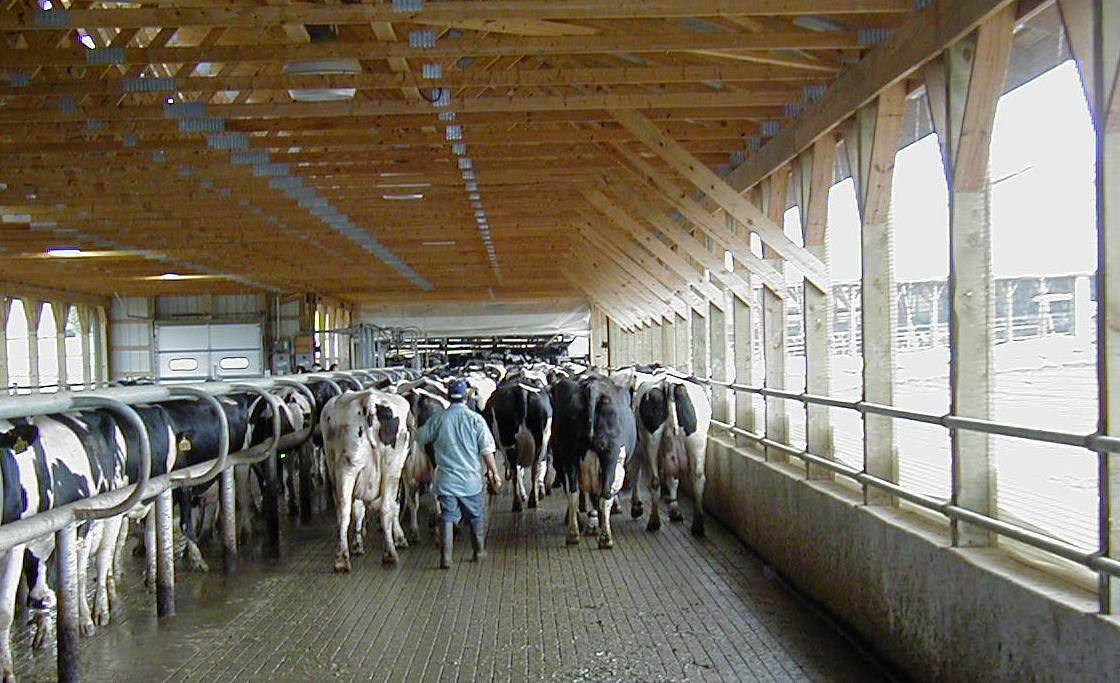
Cows may be divided into groups within barns. This helps to create an easy workflow. When one group of cows has been moved from the barn to the milking center, the empty part of the barn can be easily cleaned or maintained. Workers will typically walk behind cows as they leave the barn and clean out any manure that has been deposited in the stalls. This also gives the workers a chance to observe the cows walking and identify any that may need to be further examined.
Scraping or flushing manure is easier to do when animals are removed, but some automated alley scrapers and flush systems operate safely when animals are present. Alley scrapers move through the barn at a slow enough speed that any cows standing in the alley can simply step over them as they pass underneath. Some farms use vacuum trucks to remove manure from the alleys while cows are away from the barn being milked.
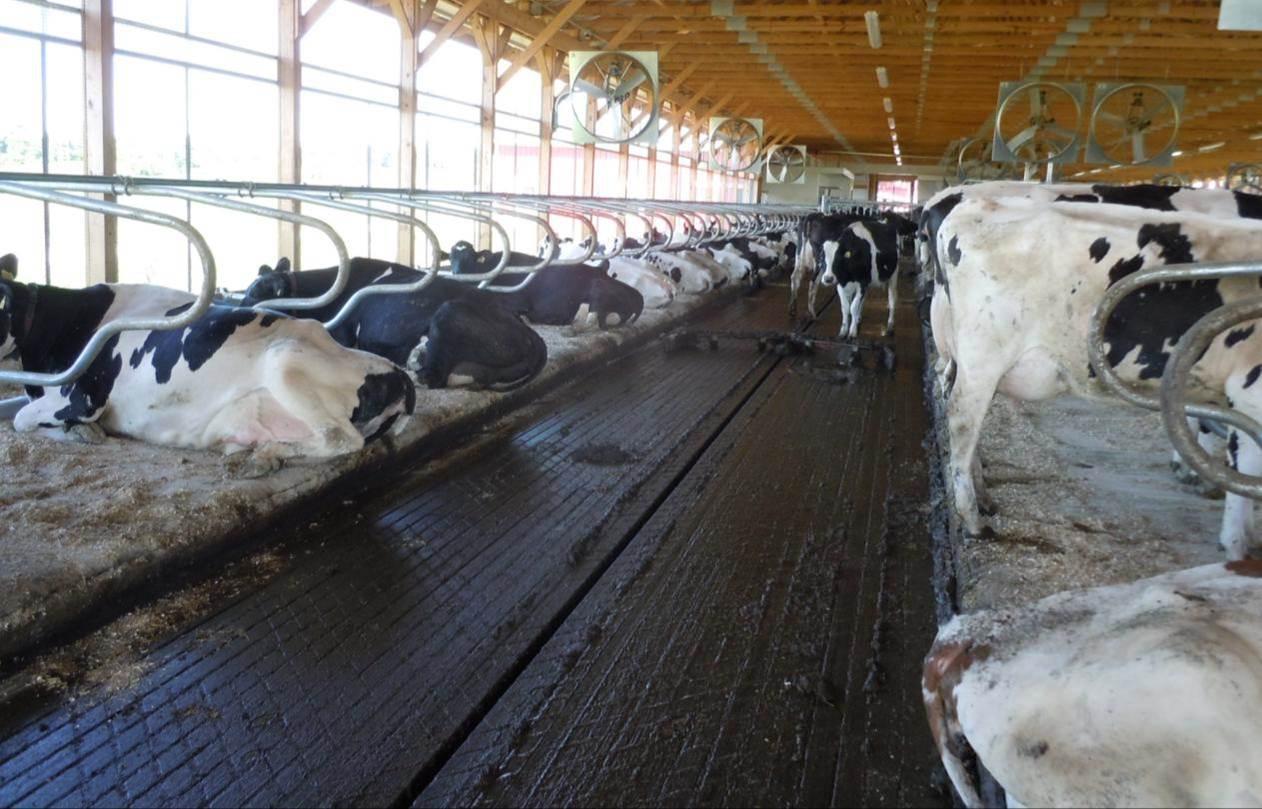
Regular removal of manure keeps the barn floors clean and reduces slippery conditions for the cows. It also helps to keep the animals clean and healthy.
Dairy cows spend most of their time in the barn eating or resting. Freestalls are provided to give the cows a clean and comfortable resting area. Stalls are carefully designed to be just the right length and width for the type and size of cow living in the barn. Stall dividers are specially designed to accommodate the natural movement of the cows when they lie down or stand up. Stalls are often raised above and sloped toward the barn floor, so that they are easy for a cow to enter, lie down, and stand back up.
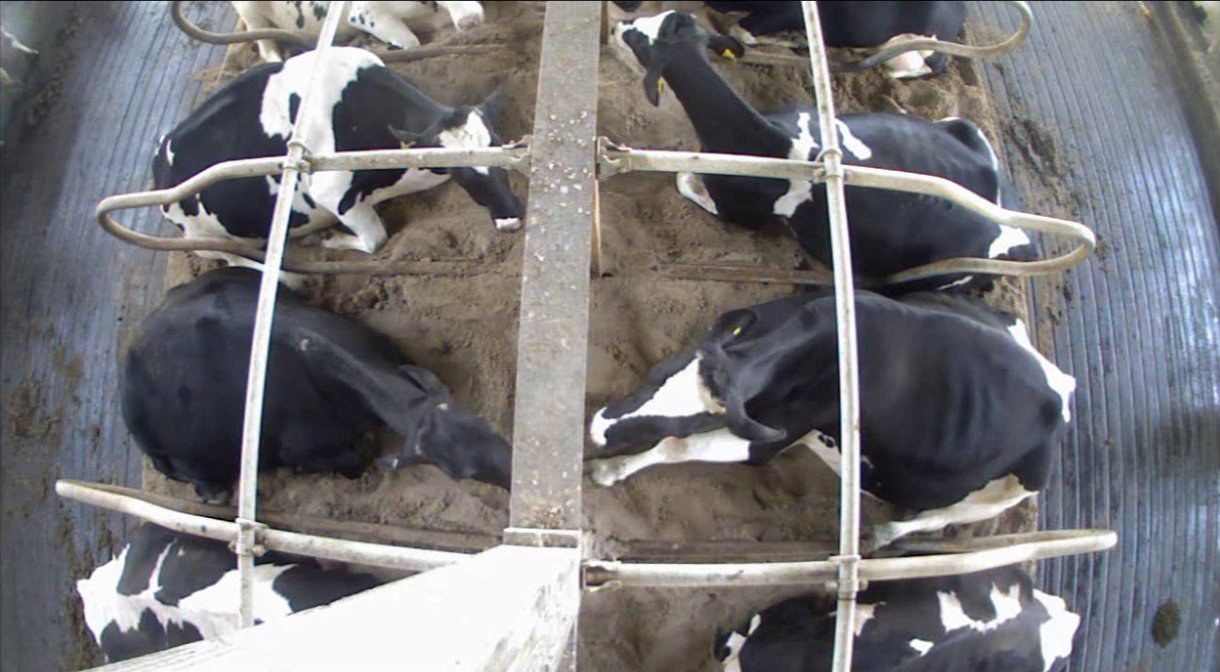
A properly designed stall positions the cow so that manure is deposited in the alley, not in the stall. If a stall has been properly designed and constructed, and adequate clean, dry bedding has been provided, most cows in a group will be either resting in the stalls or eating at the feed alley. The cow is doing an important job when resting in the stalls – they are digesting their feed and producing milk!
Bedding

Stalls are bedded using a variety of materials. Inorganic materials, such as sand, are comfortable and supportive when properly maintained, and have the added benefit of adding traction to the barn floor surface when the sand gets kicked or carried out of the stall by the cows. Organic materials such as sawdust or separated manure solids are also common bedding choices that provide a healthy, comfortable environment for the cow when properly managed. Inorganic materials do not have any impact on GHG emissions, but can cause problems in manure systems unless special features are added to separate the sand. Organic bedding materials are easier to handle in manure systems and can pass through digesters with ease, but can cause udder health problems if not managed properly. Bedding choices can also include cushioned rubber mats and waterbeds.